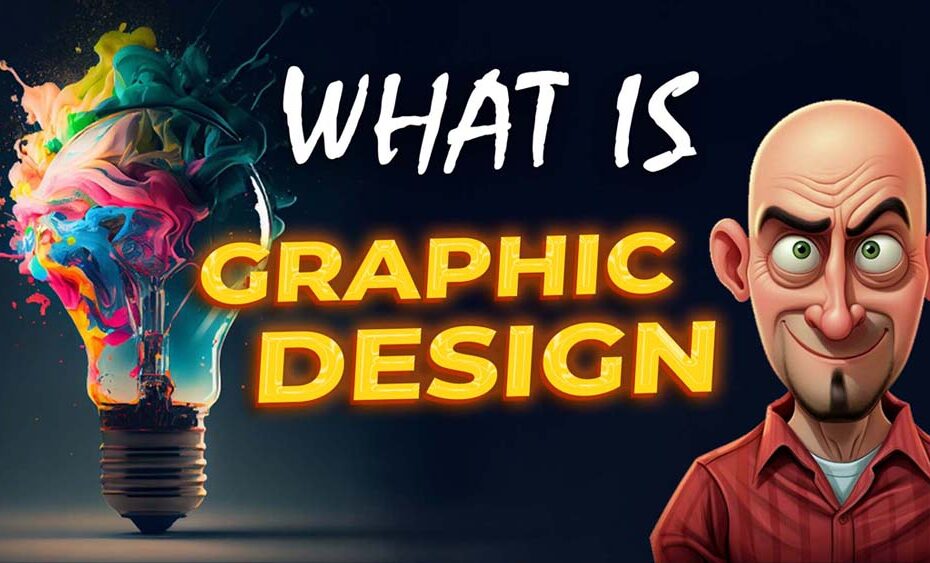So, What Is Graphic Design?
In a world increasingly driven by visual content, graphic design stands out as a fundamental and versatile form of communication. But what is graphic design? This post will delve into the essence of explaining what is graphic design, its importance, core elements, and the skills required to excel in this creative field.
Understanding Graphic Design
Graphic design is the art and practice of planning and projecting ideas and experiences with visual and textual content. In other words, it is a way to convey messages through imagery, typography, and layout. Graphic design is everywhere: from the logo of your favorite coffee shop to the layout of your favorite magazine, the interface of the app you use daily, and the billboard you pass by on your way to work.
The Purpose of Graphic Design
The primary purpose of graphic design is communication. Whether it’s to inform, persuade, organize, stimulate, locate, identify, attract attention, or provide pleasure, graphic design serves as a bridge between the creator and the audience. The effectiveness of this communication depends heavily on the visual appeal and clarity of the design.
Core Elements of Graphic Design
Graphic design is composed of several key elements that work together to create a visually compelling and effective piece. Understanding these elements is crucial for any aspiring designer.
Line
Lines are the most basic elements of design. They can be straight, curved, thick, thin, dashed, or solid. Lines help to divide space, guide the viewer’s eye, and create emphasis.
Shape
Shapes are formed by closed lines and can be geometric (like squares and circles) or organic (like free-formed shapes or natural shapes). Shapes add interest and substance to a design.
Color
Color is a powerful element in design. It can evoke emotions, convey messages, and create visual interest. Understanding color theory, including the relationships between colors and their emotional impact, is essential for effective design.
Typography
Typography refers to the style, arrangement, and appearance of text. It plays a crucial role in graphic design by setting the tone, creating hierarchy, and ensuring readability.
Texture
Texture adds a tactile quality to a design, even in a two-dimensional space. It can create a sense of depth, suggest a particular material, or add a visual interest that can engage viewers.
Space
Space, or negative space, refers to the area around and between elements in a design. Effective use of space can create balance, focus, and clarity.
Balance and Alignment
Balance is the distribution of visual weight in a design. It can be symmetrical or asymmetrical. Alignment ensures that the elements in a design are visually connected and cohesive.
The Importance of Graphic Design
Graphic design is not just about making things look good. It plays a vital role in:
- Brand Identity: Consistent and well-designed visual elements help build a recognizable and memorable brand identity.
- User Experience: Good design enhances the usability of websites, apps, and products, making them more intuitive and enjoyable to use.
- Marketing and Communication: Effective design helps to capture attention, convey messages clearly, and persuade potential customers.
- Information Dissemination: Design helps to organize and present information in a way that is easy to understand and digest.
Skills Needed for Graphic Design
Becoming a successful graphic designer requires a blend of creativity, technical skills, and knowledge. Here are some essential skills:
Creativity and Innovation
Creativity is at the heart of graphic design. Being able to think outside the box and come up with original ideas is crucial.
Proficiency in Design Software
Familiarity with design software like Adobe Photoshop, Illustrator, InDesign, and other tools is essential. These tools help bring your ideas to life.
Understanding of Design Principles
A solid understanding of design principles, including color theory, typography, and composition, is fundamental.
Communication Skills
Graphic designers must be able to communicate effectively with clients, team members, and other stakeholders. This includes understanding client needs and presenting ideas clearly.
Attention to Detail
A keen eye for detail ensures that the design is polished and professional. Small mistakes can detract from the overall effectiveness of the design.
Problem-Solving Skills
Graphic designers often need to find creative solutions to design challenges, whether it’s finding the best way to convey a message or working within the constraints of a project.
Conclusion
Graphic design is a dynamic and multifaceted field that blends art and technology to communicate ideas. It is an essential part of our daily lives, influencing how we perceive and interact with the world around us. Whether you’re a seasoned professional or just starting, understanding the core elements, purpose, and skills involved in graphic design is key to creating effective and impactful visual content. As technology and trends evolve, so too will the world of graphic design, continually offering new opportunities for creativity and expression.
